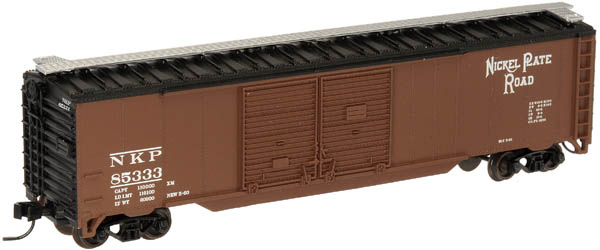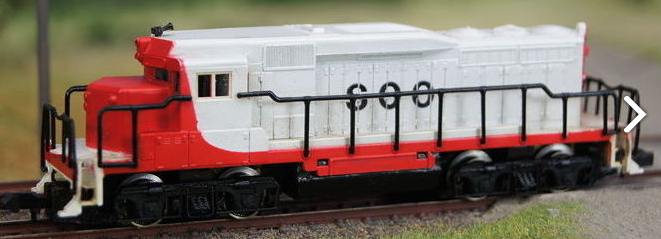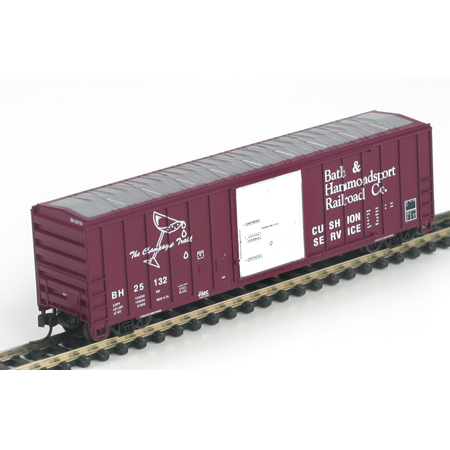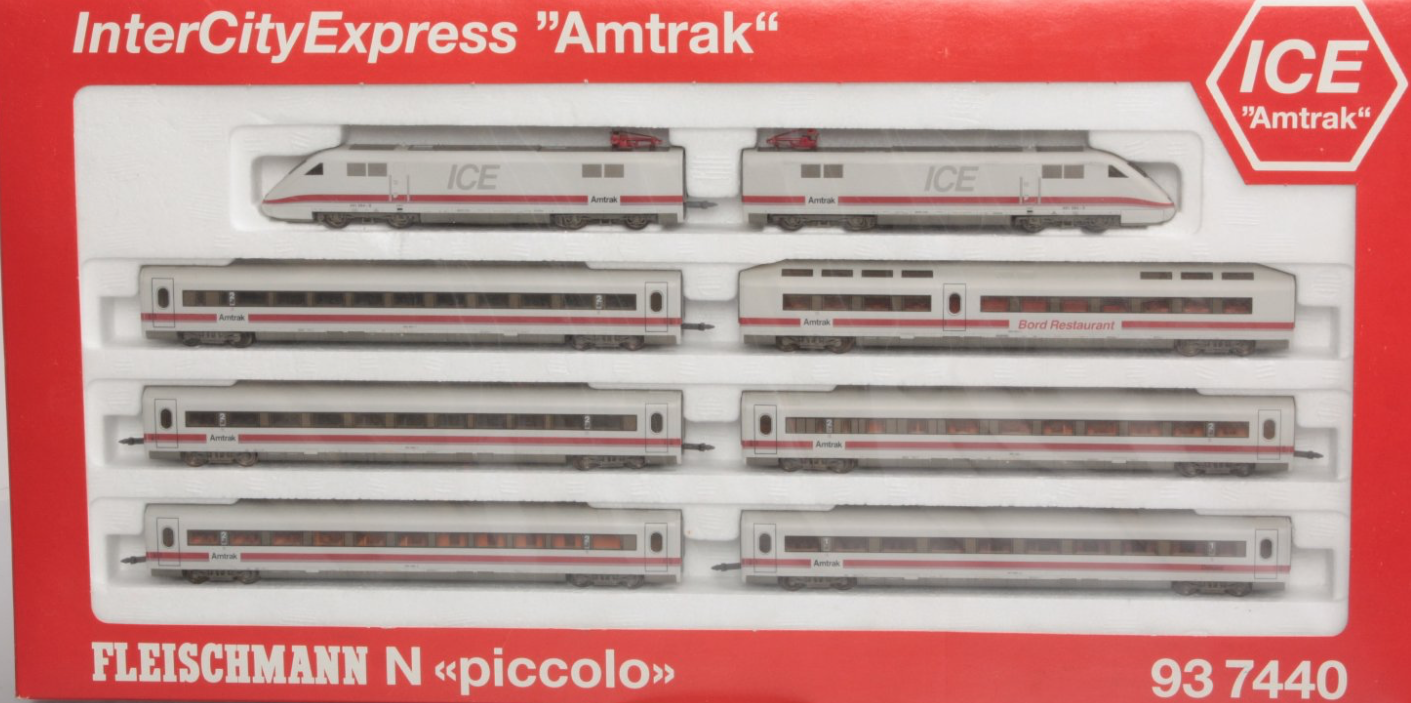Model Information: The first release of this body style was made by Roco in Austria for Atlas in 1967. Later, in 1971, Atlas moved the tooling from Austria to New Jersey and produced their own second release out of their own factory. I presume that Atlas owned the tooling because unlike other Roco models, this one did not later appear as an import by other brands such as Aurora, Minitrix or Model Power. Sometime in the 1990s Atlas again moved the production to China. As of the 2006 run, this model moved to the Atlas Trainman lower-grade range, reflecting its age.
Prototype History: The 50-foot boxcar made its first appearance in the 1930s and steadily grew in popularity over the years, which further improved redundancies by allowing for even more space within a given car. Today, the 50-footer remains the common boxcar size. After the second world war ended, and steel became once again readily available, steel became the go-to choice for construction of boxcars. Pullman Standard and ACF were some of the most prolific builders of these cars.
Double Doors were frequently an option for most of the major North American railcar manufacturers in the 1950s, 1960s and 1970s. These cars were slightly more expensive to produce and maintain, but for many applications allowed faster loading and unloading times.
Double Doors were frequently an option for most of the major North American railcar manufacturers in the 1950s, 1960s and 1970s. These cars were slightly more expensive to produce and maintain, but for many applications allowed faster loading and unloading times.
Road Name History: 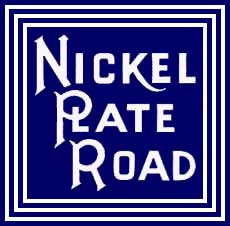 The New York, Chicago and St. Louis Railroad (reporting mark NKP), abbreviated NYC&St.L, was a railroad that operated in the mid-central United States. Commonly referred to as the Nickel Plate Road, the railroad served a large area, including trackage in the states of New York, Pennsylvania, Ohio, Indiana, Illinois and Missouri. Its primary connections included Buffalo, Chicago, Cincinnati, Cleveland, Indianapolis, St. Louis, and Toledo.
The New York, Chicago and St. Louis Railroad (reporting mark NKP), abbreviated NYC&St.L, was a railroad that operated in the mid-central United States. Commonly referred to as the Nickel Plate Road, the railroad served a large area, including trackage in the states of New York, Pennsylvania, Ohio, Indiana, Illinois and Missouri. Its primary connections included Buffalo, Chicago, Cincinnati, Cleveland, Indianapolis, St. Louis, and Toledo.
The Nickel Plate Railroad was constructed in 1881 along the South Shore of the Great Lakes connecting Buffalo and Chicago to compete with the Lake Shore and Michigan Southern Railway. In 1964 the Nickel Plate Road and several other mid-western carriers were merged into the larger Norfolk and Western Railway (N&W). The goal of the N&W expansion was to form a more competitive and successful system serving 14 states and the Canadian province of Ontario on more than 7,000 miles (11,000 km) of railroad. The profitable N&W was itself combined with the Southern Railway, another profitable carrier, to form Norfolk Southern Corporation (NS) in 1982.
At the end of 1960 NKP operated 2,170 miles (3,490 km) of road on 4,009 miles (6,452 km) of track, not including the 25 miles (40 km) of Lorain & West Virginia. That year it reported 9758 million net ton-miles of revenue freight and 41 million passenger-miles.
The Nickel Plate Historical and Technical Society works to preserve the memory of the Nickel Plate Road.
From WIkipedia

The Nickel Plate Railroad was constructed in 1881 along the South Shore of the Great Lakes connecting Buffalo and Chicago to compete with the Lake Shore and Michigan Southern Railway. In 1964 the Nickel Plate Road and several other mid-western carriers were merged into the larger Norfolk and Western Railway (N&W). The goal of the N&W expansion was to form a more competitive and successful system serving 14 states and the Canadian province of Ontario on more than 7,000 miles (11,000 km) of railroad. The profitable N&W was itself combined with the Southern Railway, another profitable carrier, to form Norfolk Southern Corporation (NS) in 1982.
At the end of 1960 NKP operated 2,170 miles (3,490 km) of road on 4,009 miles (6,452 km) of track, not including the 25 miles (40 km) of Lorain & West Virginia. That year it reported 9758 million net ton-miles of revenue freight and 41 million passenger-miles.
The Nickel Plate Historical and Technical Society works to preserve the memory of the Nickel Plate Road.
From WIkipedia
Brand/Importer Information: In 1924 Stephan Schaffan, Sr. founded the Atlas Tool Company in Newark, New Jersey. In 1933 his son, Stephan Schaffan, Jr., came to work for his father at the age of sixteen. Steve Jr. built model airplanes as a hobby and frequented a local hobby shop. Being an enterprising young man, he would often ask the owner if there was anything he could do to earn some extra spending money. Tired of listening to his requests, the hobby-store owner threw some model railroad track parts his way and said, "Here, see if you can improve on this".
In those days, railroad modelers had to assemble and build everything from scratch. Steve Jr. created a "switch kit" which sold so well, that the entire family worked on them in the basement at night, while doing business as usual in the machine shop during the day.
Subsequently, Steve Jr. engineered the stapling of rail to fiber track, along with inventing the first practical rail joiner and pre-assembled turnouts and flexible track. All of these products, and more, helped to popularize model railroading and assisted in the creation of a mass-market hobby. The budding entrepreneur quickly outgrew the limitations of a basement and small garage operation. Realizing they could actually make a living selling track and related products, Steve and his father had the first factory built in Hillside, New Jersey at 413 Florence Avenue in 1947. On September 30, 1949, the Atlas Tool Company was officially incorporated as a New Jersey company.
In 1985, Steve was honored posthumously for his inventions by the Model Railroad Industry Association and was inducted into the Model Railroad Industry Hall of Fame in Baltimore, Maryland. In addition, Steve was nominated and entered into the National Model Railroad Association Pioneers of Model Railroading in 1995.
In the early 1990s, the Atlas Tool Company changed its name to Atlas Model Railroad Company, Inc.
In those days, railroad modelers had to assemble and build everything from scratch. Steve Jr. created a "switch kit" which sold so well, that the entire family worked on them in the basement at night, while doing business as usual in the machine shop during the day.
Subsequently, Steve Jr. engineered the stapling of rail to fiber track, along with inventing the first practical rail joiner and pre-assembled turnouts and flexible track. All of these products, and more, helped to popularize model railroading and assisted in the creation of a mass-market hobby. The budding entrepreneur quickly outgrew the limitations of a basement and small garage operation. Realizing they could actually make a living selling track and related products, Steve and his father had the first factory built in Hillside, New Jersey at 413 Florence Avenue in 1947. On September 30, 1949, the Atlas Tool Company was officially incorporated as a New Jersey company.
In 1985, Steve was honored posthumously for his inventions by the Model Railroad Industry Association and was inducted into the Model Railroad Industry Hall of Fame in Baltimore, Maryland. In addition, Steve was nominated and entered into the National Model Railroad Association Pioneers of Model Railroading in 1995.
In the early 1990s, the Atlas Tool Company changed its name to Atlas Model Railroad Company, Inc.
Item created by: Bryan on 2016-08-14 12:49:53. Last edited by gdm on 2019-06-19 08:52:17
If you see errors or missing data in this entry, please feel free to log in and edit it. Anyone with a Gmail account can log in instantly.
If you see errors or missing data in this entry, please feel free to log in and edit it. Anyone with a Gmail account can log in instantly.


